

Who are the Christians of Iraq?
Michael J.L. La Civita
Friday, March 5, 2021
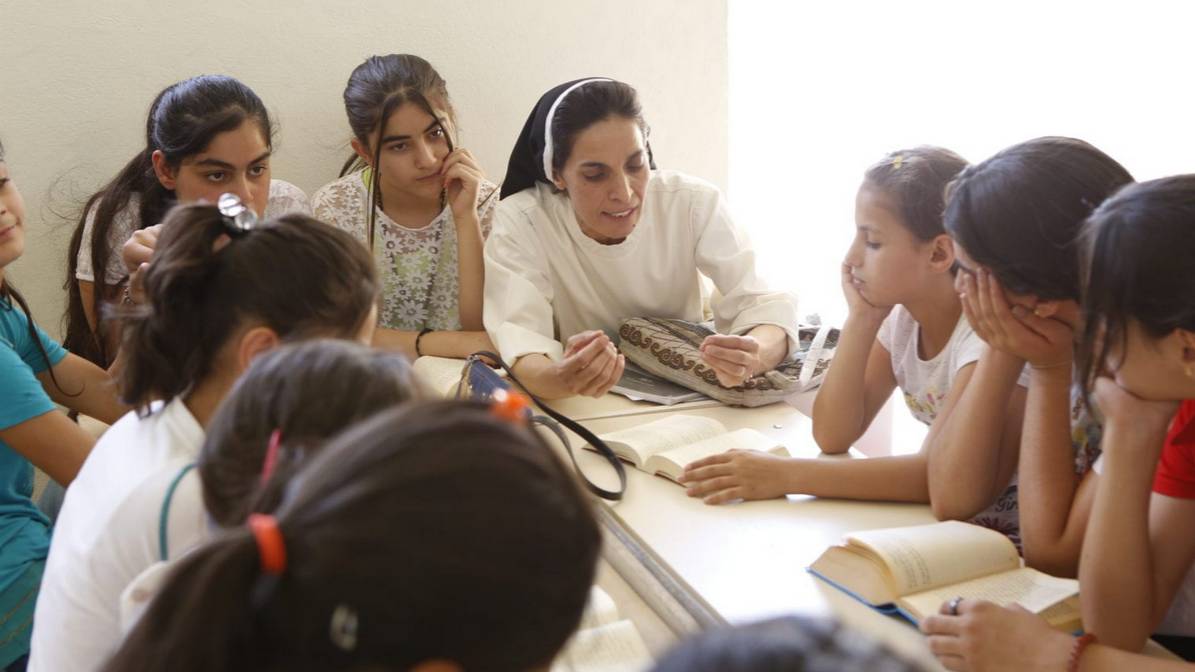
Sister Montaha, from the Dominican Sisters of St. Catherine of Siena, gives a class at the summer catechism program of the School of the Immaculate Conception in Qaraqosh, once a thriving Christian town in northern Iraq, liberated recently from Islamic State militants. (Photo: Raed Rafei, courtesy of CNEWA)
Pope Francis will meet an exhausted and weary band of Iraqi Christians, a community decimated by decades of war and persecution. Prior to the U.S.-led invasion of Iraq in 2003, about 1.5 million Christians lived there, nearly 6 percent of Iraq’s population, itself down from about 12 percent in the World War II-era. Today, estimates range wildly, with some claiming that as many as 500,000 Christians remain. Most observers recognize, however, that there are fewer than 300,000 Christians in the country, many of them displaced by Iraq’s civil war between 2006 and 2008, the occupation of the Nineveh Plain by ISIS in the summer of 2014, and the economic and security uncertainties that remain a fact of life in Iraq today.
Some of those displaced Iraqi Christians in the Middle East live a hand-to-mouth existence in Jordan and Lebanon, as they wait for their emigration papers for points West: the Americas, Europe or Oceania. In 1990, fewer than 70,000 Chaldean Catholics lived in the United States, shepherded by one bishop based in suburban Detroit. Today, some 282,000 Chaldeans live in North America, cared for by three bishops living in Michigan, Southern California and Ontario, respectively. Eparchies for Chaldean and Syriac Catholics have been erected to care for new Chaldean and Syriac Catholic immigrants in Australia and Venezuela, too.
Modern Iraq occupies much of ancient Mesopotamia, that is the land between the Tigris and Euphrates rivers. Commonly referred to as the cradle of civilization, Mesopotamia is less known as the cradle of the Christian faith. In its fertile soil, the seeds of Christianity took root quickly and eventually spread throughout Asia, reaching Afghanistan, China, India and Mongolia.
The origins of the Christian faith in Mesopotamia are obscure. An ancient legend connects a sickly king of Edessa to Jesus. Others credit St. Thomas the Apostle with evangelizing the region’s Jewish merchants as he traveled to India. That Edessa is the likely source of the faith in Mesopotamia is supported by linguistic evidence: The Aramaic dialect of Edessa, commonly called Syriac, became the literary language of the non-Greek-speaking Christian community in the Middle East.
Below is a short introduction to the four principal churches in Iraq, whose remnant faithful are enthusiastically welcoming the first bishop of Rome to visit this ancient land:
The Chaldean Church. The lion’s share of Iraqi Christians belong to the Chaldean Church, an apostolic community whose members share in the history and traditions of the Church of the East and profess full communion with the church of Rome.
The word “Chaldean” identifies this Catholic community with an ancient people who once controlled Mesopotamia. Chaldeans take pride in their ancient roots, counting Abraham of Ur of the land of the Chaldeans — whom Jews, Christians and Muslims call their father in faith — as one of their own.
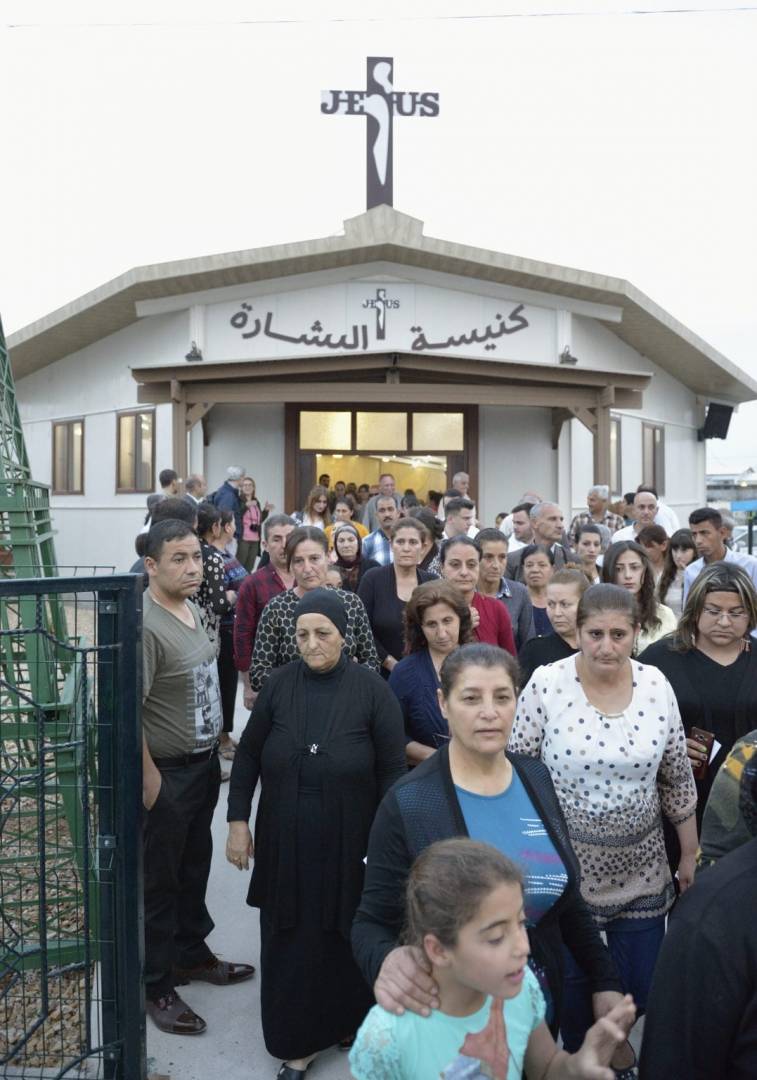 The early years of the church were tumultuous. As the early church embraced converts from the Greco-Roman and Semitic worlds, misunderstandings surfaced regarding the person and nature of Jesus Christ, misunderstandings exacerbated by cultural and linguistic differences and even political realities. These issues, coupled with the frequent wars between Christian Byzantium and the Persian Empire, compromised the position of Christians in Mesopotamia, who were governed by a non-Christian Persian monarch. By the late fifth century, this “Church of the East” parted ways with the rest of the Christian world.
Nevertheless, the Church of the East became renowned for its scholarship, especially in grammar, history, logic, mathematics, philosophy and theology. Arab Muslims, who conquered the Persian Empire in 634, employed church scholars, who are largely responsible for the Arab world’s familiarity with ancient Greek astronomy, chemistry, mathematics and philosophy — disciplines that eventually reached Europe.
At its height in the 14th century, the Church of the East spanned most of Asia and included some 30 metropolitan sees and more than 200 eparchies.
But the church’s successes were nearly destroyed overnight when, at the end of the 14th century, Timur the Lame and his army invaded the Middle East, sacked its cities, massacred the inhabitants and leveled what remained. Those Christians who escaped death or enslavement retreated into the mountains, hunkering down in remote monasteries and mountainside villages.
Even as isolation intensified, isolated communities of the church met Latin Catholic missionaries. In 1445, friars received the Chaldeans (as they were known) living on the island of Cyprus into full communion with Rome. The use of “Chaldean” dates to this union. Subsequently, individual communities and families of the Church of the East formed pro-Catholic or anti-Catholic parties, marking centuries of turmoil as families and factions jockeyed back and forth.
The papacy did not recognize a Catholic patriarch until 1830, and for the next 150 years — despite the atrocities during World War I — the Chaldean Church grew, usually at the expense of the Church of the East. The seat of the patriarch moved from Mosul to Baghdad in 1950, as large numbers of Chaldean Catholics settled in the capital. Well educated and industrious, the Chaldeans eventually constituted a significant portion of Iraq’s middle and professional classes.
The early years of the church were tumultuous. As the early church embraced converts from the Greco-Roman and Semitic worlds, misunderstandings surfaced regarding the person and nature of Jesus Christ, misunderstandings exacerbated by cultural and linguistic differences and even political realities. These issues, coupled with the frequent wars between Christian Byzantium and the Persian Empire, compromised the position of Christians in Mesopotamia, who were governed by a non-Christian Persian monarch. By the late fifth century, this “Church of the East” parted ways with the rest of the Christian world.
Nevertheless, the Church of the East became renowned for its scholarship, especially in grammar, history, logic, mathematics, philosophy and theology. Arab Muslims, who conquered the Persian Empire in 634, employed church scholars, who are largely responsible for the Arab world’s familiarity with ancient Greek astronomy, chemistry, mathematics and philosophy — disciplines that eventually reached Europe.
At its height in the 14th century, the Church of the East spanned most of Asia and included some 30 metropolitan sees and more than 200 eparchies.
But the church’s successes were nearly destroyed overnight when, at the end of the 14th century, Timur the Lame and his army invaded the Middle East, sacked its cities, massacred the inhabitants and leveled what remained. Those Christians who escaped death or enslavement retreated into the mountains, hunkering down in remote monasteries and mountainside villages.
Even as isolation intensified, isolated communities of the church met Latin Catholic missionaries. In 1445, friars received the Chaldeans (as they were known) living on the island of Cyprus into full communion with Rome. The use of “Chaldean” dates to this union. Subsequently, individual communities and families of the Church of the East formed pro-Catholic or anti-Catholic parties, marking centuries of turmoil as families and factions jockeyed back and forth.
The papacy did not recognize a Catholic patriarch until 1830, and for the next 150 years — despite the atrocities during World War I — the Chaldean Church grew, usually at the expense of the Church of the East. The seat of the patriarch moved from Mosul to Baghdad in 1950, as large numbers of Chaldean Catholics settled in the capital. Well educated and industrious, the Chaldeans eventually constituted a significant portion of Iraq’s middle and professional classes.
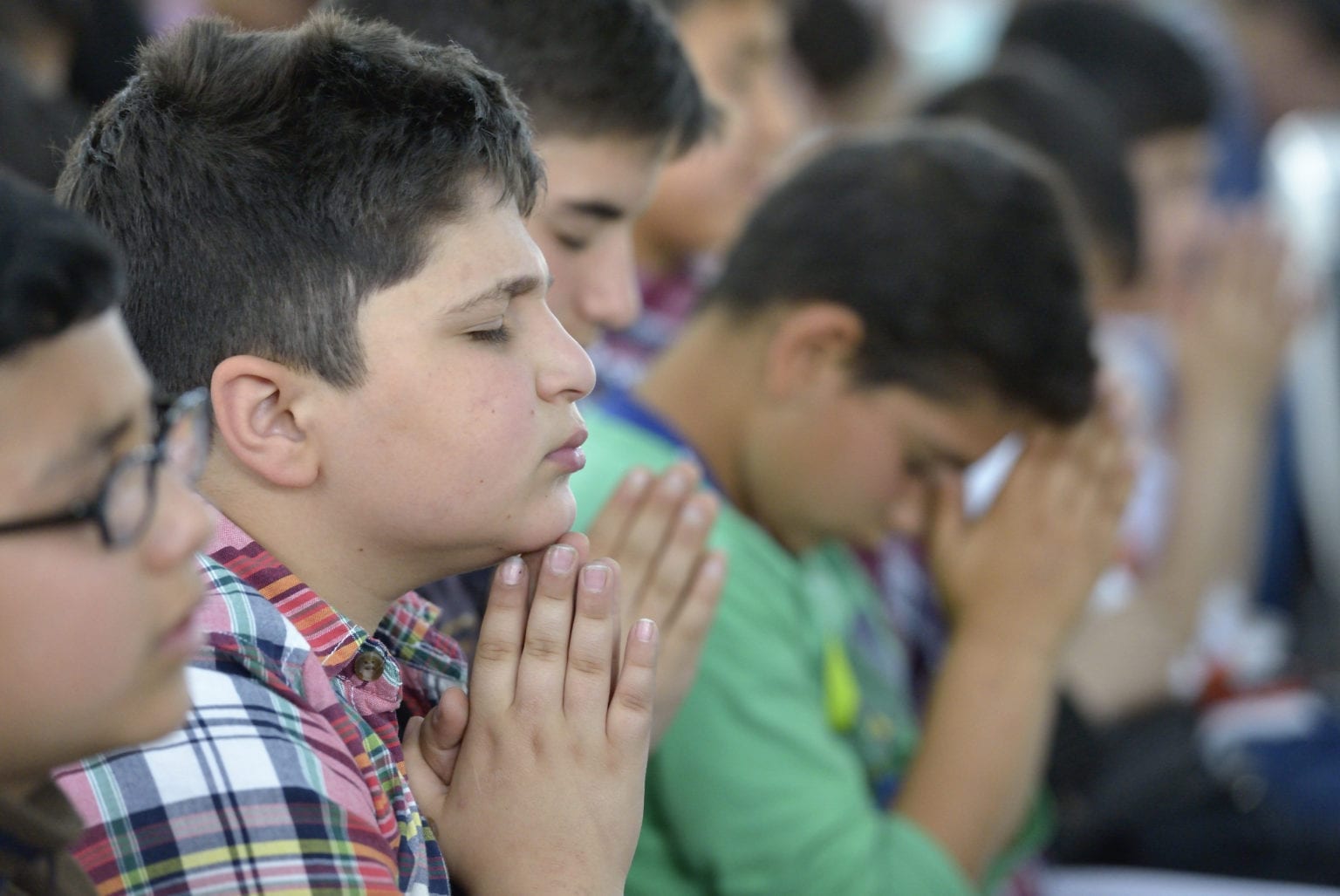 While the unraveling of Iraq has decimated the nation’s Christian communities of all rites and traditions, it has intensified collaboration between the two historic churches; relations between the Chaldean Church and the Church of the East have improved dramatically. Cardinal Louis Raphael I Sako, patriarch of Babylon of the Chaldeans, leads his scattered worldwide flock of 700,000 members from Baghdad.
The Church of the East. During World War I, up to a third of those who belonged to the Church of the East were murdered by agents of the Ottoman Turkish sultan, who governed most of Mesopotamia. Survivors fled to the British-held cities of Mosul, Baghdad and Basra — and points farther west. Subsequent war and emigration nearly decimated the presence of the church in the cradle of civilization, which for decades had relocated its primary see to suburban Chicago before it returned to Iraq in 2015.
Yet, the sufferings of the Church of the East have brought to light not just the existence of this ancient community, once called Nestorian, but the richness of a tradition that unknowingly influenced the cultures and churches of the West, linking the Classical modern worlds.
While the unraveling of Iraq has decimated the nation’s Christian communities of all rites and traditions, it has intensified collaboration between the two historic churches; relations between the Chaldean Church and the Church of the East have improved dramatically. Cardinal Louis Raphael I Sako, patriarch of Babylon of the Chaldeans, leads his scattered worldwide flock of 700,000 members from Baghdad.
The Church of the East. During World War I, up to a third of those who belonged to the Church of the East were murdered by agents of the Ottoman Turkish sultan, who governed most of Mesopotamia. Survivors fled to the British-held cities of Mosul, Baghdad and Basra — and points farther west. Subsequent war and emigration nearly decimated the presence of the church in the cradle of civilization, which for decades had relocated its primary see to suburban Chicago before it returned to Iraq in 2015.
Yet, the sufferings of the Church of the East have brought to light not just the existence of this ancient community, once called Nestorian, but the richness of a tradition that unknowingly influenced the cultures and churches of the West, linking the Classical modern worlds.
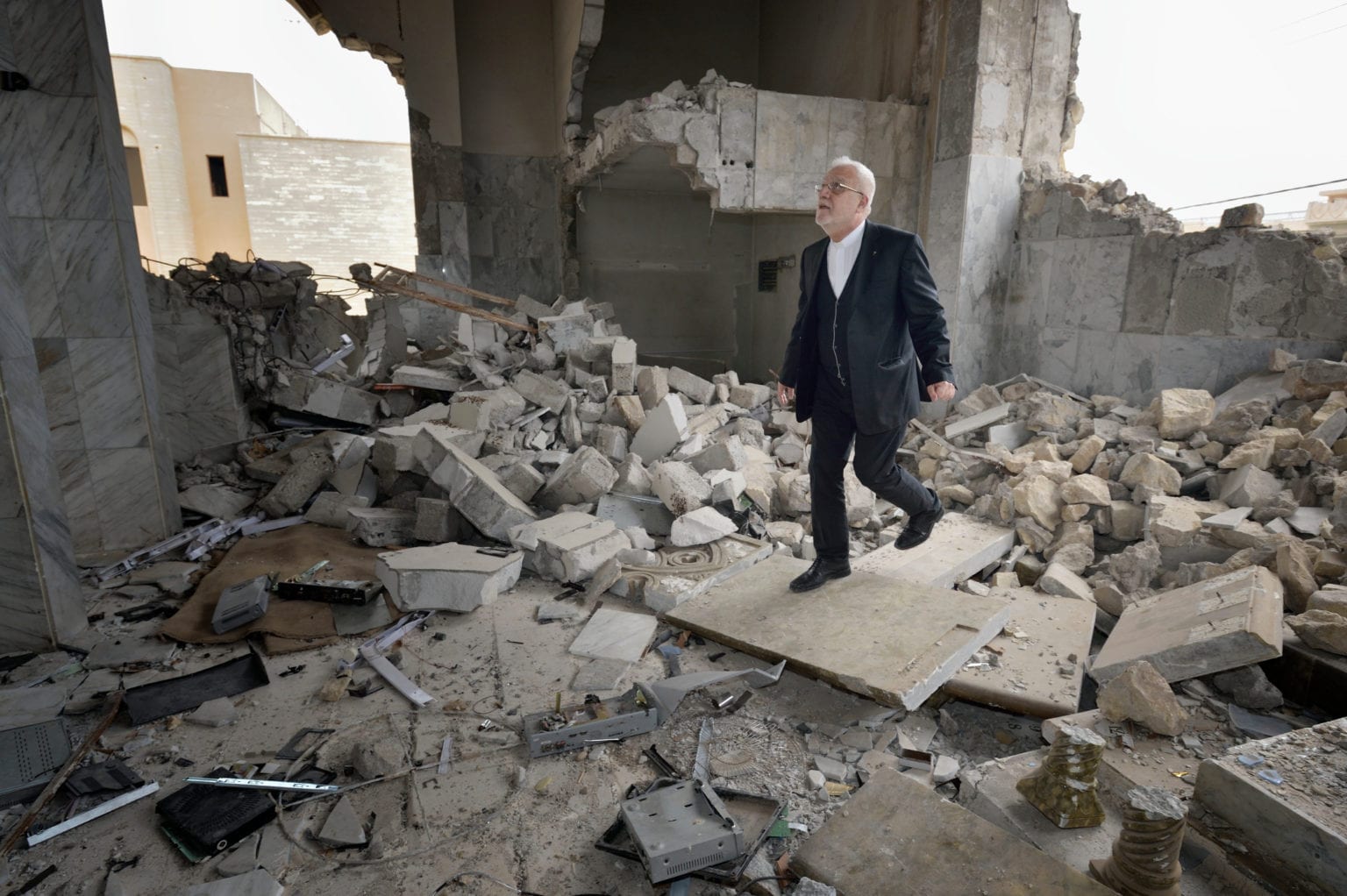 Catholicos-Patriarch Gewurgis III of Seleucia-Ctesiphon leads this ancient church of some 400,000 people from the Christian enclave of Ankawa in the Iraqi Kurdish city of Erbil.
The Syriac Catholic Church. As with most Christian communities of the Middle East, the Syriac Catholic Church has suffered severely as the region’s stability has deteriorated in the last 100 years or so. During Iraq’s civil war (2006-2007), followed by the siege of its cathedral in Baghdad in 2010, thousands fled the violence in Baghdad and Mosul, where they had once enjoyed relative prosperity. The displaced found security in their remote ancestral villages near ancient Nineveh — especially the town of Qaraqosh.
Now, these once proud centers of the church — the source of many of its vocations to the priesthood and religious life — have been decimated, too, as extremists invaded the Nineveh Plain in August 2014, displacing more than 120,000 Christians, as well as Yazidis and other minorities. Civil war in Syria has uprooted thousands more, while economic stagnation and political uncertainty in Egypt and Lebanon have encouraged some Syriac Catholic families to emigrate to the West. While some degree of peace has returned to the Nineveh Plain and the northeast of Syria, security and economic stability have not.
A small church, numbering about 200,000 people worldwide, the Syriac Catholic Church somehow endures, despite the repeated conflicts and cycles of persecution in the last 120 years.
Together with the much larger Syriac Orthodox Church, which numbers some 4.2 million people, including 3.7 million in India, the Syriac Catholic Church shares in the heritage of the Syrian city of Antioch, the political and socioeconomic center of the eastern Mediterranean in the ancient world. Though inhabited by a diverse population — Greeks and Macedonians, Romans and Jews, Syrians and Nabateans — Antioch was culturally Hellenic and its lingua franca, Greek. But those who lived in Syria’s rural interior spoke Syriac, a dialect of Aramaic nurtured in the city of Edessa.
In the seventh century, Syriac Christians generally welcomed the invading Muslim Arabs, who accepted them as “People of the Book.” Syriac Christianity flourished. Poets composed hymns that simplified complex ideas. Scholars translated ancient Greek texts and wrote biblical commentaries. Monks explored grammar, medicine, philosophy, rhetoric and science. Theologians and poets continued the tradition of creating liturgies, borrowing elements from the Byzantine and other traditions.
Catholicos-Patriarch Gewurgis III of Seleucia-Ctesiphon leads this ancient church of some 400,000 people from the Christian enclave of Ankawa in the Iraqi Kurdish city of Erbil.
The Syriac Catholic Church. As with most Christian communities of the Middle East, the Syriac Catholic Church has suffered severely as the region’s stability has deteriorated in the last 100 years or so. During Iraq’s civil war (2006-2007), followed by the siege of its cathedral in Baghdad in 2010, thousands fled the violence in Baghdad and Mosul, where they had once enjoyed relative prosperity. The displaced found security in their remote ancestral villages near ancient Nineveh — especially the town of Qaraqosh.
Now, these once proud centers of the church — the source of many of its vocations to the priesthood and religious life — have been decimated, too, as extremists invaded the Nineveh Plain in August 2014, displacing more than 120,000 Christians, as well as Yazidis and other minorities. Civil war in Syria has uprooted thousands more, while economic stagnation and political uncertainty in Egypt and Lebanon have encouraged some Syriac Catholic families to emigrate to the West. While some degree of peace has returned to the Nineveh Plain and the northeast of Syria, security and economic stability have not.
A small church, numbering about 200,000 people worldwide, the Syriac Catholic Church somehow endures, despite the repeated conflicts and cycles of persecution in the last 120 years.
Together with the much larger Syriac Orthodox Church, which numbers some 4.2 million people, including 3.7 million in India, the Syriac Catholic Church shares in the heritage of the Syrian city of Antioch, the political and socioeconomic center of the eastern Mediterranean in the ancient world. Though inhabited by a diverse population — Greeks and Macedonians, Romans and Jews, Syrians and Nabateans — Antioch was culturally Hellenic and its lingua franca, Greek. But those who lived in Syria’s rural interior spoke Syriac, a dialect of Aramaic nurtured in the city of Edessa.
In the seventh century, Syriac Christians generally welcomed the invading Muslim Arabs, who accepted them as “People of the Book.” Syriac Christianity flourished. Poets composed hymns that simplified complex ideas. Scholars translated ancient Greek texts and wrote biblical commentaries. Monks explored grammar, medicine, philosophy, rhetoric and science. Theologians and poets continued the tradition of creating liturgies, borrowing elements from the Byzantine and other traditions.
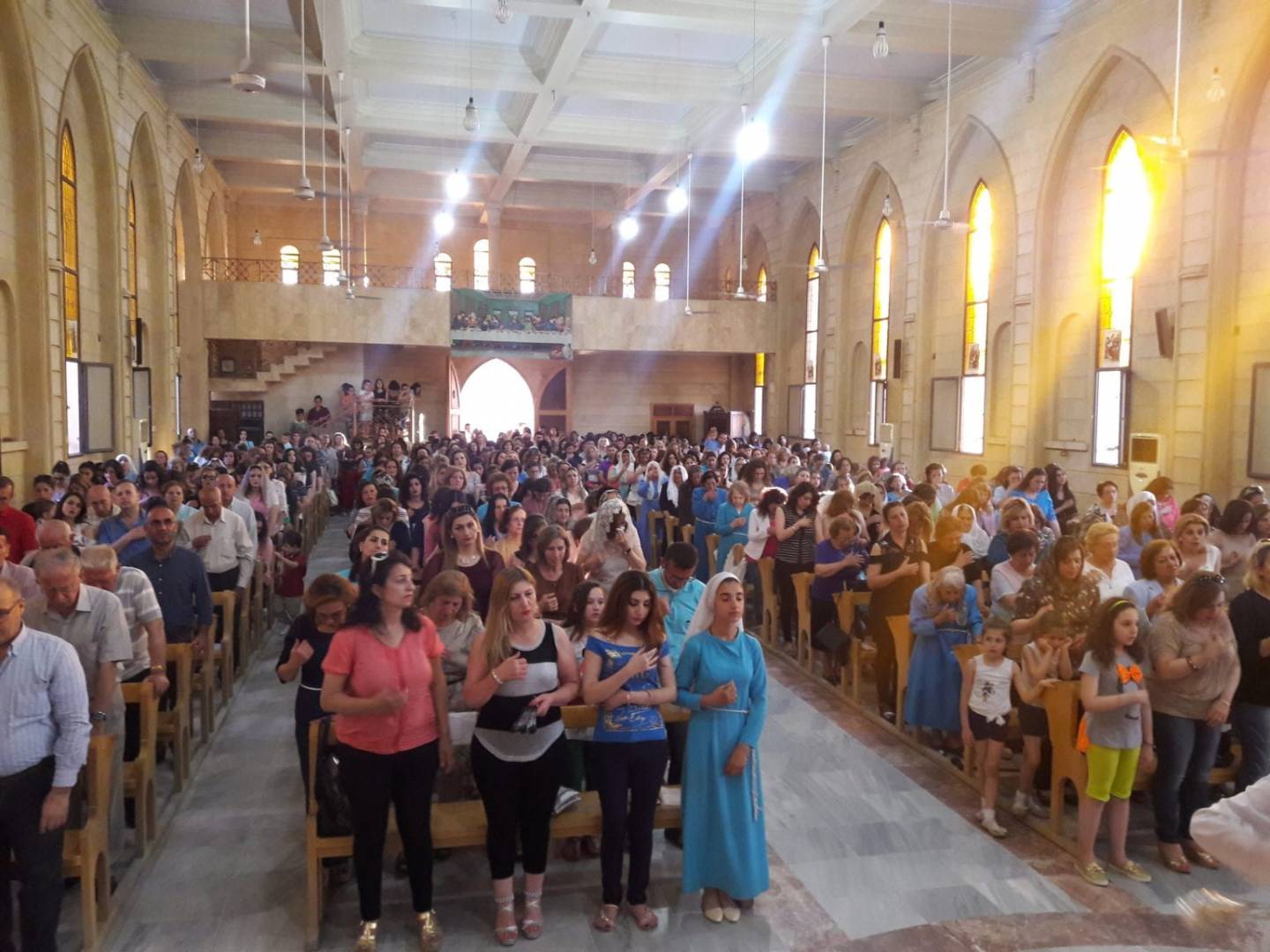 Arab Muslim leaders employed Syriac scholars, who were largely responsible for the Arab world’s familiarity with ancient Greek astronomy, chemistry, mathematics and philosophy — disciplines that eventually reached Europe via Arab Sicily and Spain.
In the 18th century, a renewed Catholic presence in the Middle East, bolstered by the presence of French and Italian missionaries, formed a Catholic community within the Syriac Orthodox Church. The growth of this new church ended, however, as the long and painful decline of the Ottoman Turkish Empire coincided with the rise of European colonial ambitions. Suspicious of collusion, the Ottomans murdered more than 25,000 Syriac Christians between 1895 and 1896.
During World War I, the Christian subjects of the Ottoman sultan were caught between two opposing cultures — their Sunni Muslim superiors and the Allied “Christian” powers of Great Britain, France and Russia, which encouraged separatist movements. The consequences were grave. Hundreds of thousands were killed, including some 50,000 Syriac Catholics and six of the church’s bishops. Survivors, including the patriarch, sought refuge in cities, especially Beirut, which remains the seat of the Syriac Catholic patriarchate. Today, Patriarch Ignatius Ephrem Joseph III of Antioch and all the East of the Syriacs pastors his flock from that struggling city on the Mediterranean.
The Syriac Orthodox Church. Hounded by centuries of persecution, isolation and hardship, generation after generation of Syriac Orthodox families slowly abjured their Christian faith. Scholars estimate that by the beginning of the 20th century, fewer than 270,000 Syriac Orthodox Christians remained in Mesopotamia. But even as the trials for the church have only intensified in the last 100 years, membership has recovered. The church now counts as many as 5.5 million members worldwide, with two-thirds living in India.
Many of the surviving families who fled to Baghdad, Beirut and Mosul after 1915, the “Year of the Sword,” are now leaving as professionals for Europe, North America and Oceania. The emigration of Syriac Christians, who once formed the core of Syria and Iraq’s middle classes, has created a regional “brain drain,” as they establish new lives far from their historic center in the cradle of civilization.
Led by the dynamic Ignatius Aphrem II, patriarch of Antioch, the Syriac Orthodox Church includes parishes on six continents, participates in worldwide ecumenical activities and promotes strong formation programs for its youth and lay leaders.
Conclusion. Other Christian communities in Iraq — such as the Armenian Apostolic and Catholic churches, the Melkite Greek and Roman Catholic churches, and Christians from the reformed and evangelical traditions — although numerically small, nevertheless shine as heroic witnesses to the Gospel.
This article was originally published on March 5, 2021, on the CNEWA blog and has been reproduced with kind permission by CNEWA. To read the original, click here.
Arab Muslim leaders employed Syriac scholars, who were largely responsible for the Arab world’s familiarity with ancient Greek astronomy, chemistry, mathematics and philosophy — disciplines that eventually reached Europe via Arab Sicily and Spain.
In the 18th century, a renewed Catholic presence in the Middle East, bolstered by the presence of French and Italian missionaries, formed a Catholic community within the Syriac Orthodox Church. The growth of this new church ended, however, as the long and painful decline of the Ottoman Turkish Empire coincided with the rise of European colonial ambitions. Suspicious of collusion, the Ottomans murdered more than 25,000 Syriac Christians between 1895 and 1896.
During World War I, the Christian subjects of the Ottoman sultan were caught between two opposing cultures — their Sunni Muslim superiors and the Allied “Christian” powers of Great Britain, France and Russia, which encouraged separatist movements. The consequences were grave. Hundreds of thousands were killed, including some 50,000 Syriac Catholics and six of the church’s bishops. Survivors, including the patriarch, sought refuge in cities, especially Beirut, which remains the seat of the Syriac Catholic patriarchate. Today, Patriarch Ignatius Ephrem Joseph III of Antioch and all the East of the Syriacs pastors his flock from that struggling city on the Mediterranean.
The Syriac Orthodox Church. Hounded by centuries of persecution, isolation and hardship, generation after generation of Syriac Orthodox families slowly abjured their Christian faith. Scholars estimate that by the beginning of the 20th century, fewer than 270,000 Syriac Orthodox Christians remained in Mesopotamia. But even as the trials for the church have only intensified in the last 100 years, membership has recovered. The church now counts as many as 5.5 million members worldwide, with two-thirds living in India.
Many of the surviving families who fled to Baghdad, Beirut and Mosul after 1915, the “Year of the Sword,” are now leaving as professionals for Europe, North America and Oceania. The emigration of Syriac Christians, who once formed the core of Syria and Iraq’s middle classes, has created a regional “brain drain,” as they establish new lives far from their historic center in the cradle of civilization.
Led by the dynamic Ignatius Aphrem II, patriarch of Antioch, the Syriac Orthodox Church includes parishes on six continents, participates in worldwide ecumenical activities and promotes strong formation programs for its youth and lay leaders.
Conclusion. Other Christian communities in Iraq — such as the Armenian Apostolic and Catholic churches, the Melkite Greek and Roman Catholic churches, and Christians from the reformed and evangelical traditions — although numerically small, nevertheless shine as heroic witnesses to the Gospel.
This article was originally published on March 5, 2021, on the CNEWA blog and has been reproduced with kind permission by CNEWA. To read the original, click here.

People leave a Catholic church after Mass in a displaced persons camp in Ankawa, near Erbil, Iraq, on 11 April 2016. Residents of the camp are mostly Christians displaced by ISIS in 2014. (Photo: Paul Jeffrey, courtesy of CNEWA)

Children prepare for first communion in a Catholic church in a displaced persons camp in Ankawa, near Erbil, Iraq, in 2016. (Photo: Paul Jeffrey, courtesy of CNEWA)

Father Emanuel Youkhana of the Holy Apostolic Catholic Assyrian Church of the East inspects the rubble of a Syriac Orthodox Church in Mosul, Iraq, on 27 January 2017. The Islamic State group, which took over Mosul in 2014, had used the building as a warehouse. (Photo: Paul Jeffrey, courtesy of CNEWA)

Syrian Christians celebrate the Divine Liturgy at Jesus the King Chaldean Catholic Church in Hassake, Syria, in 2017. (Photo: CNEWA)
Related Articles:
<<













